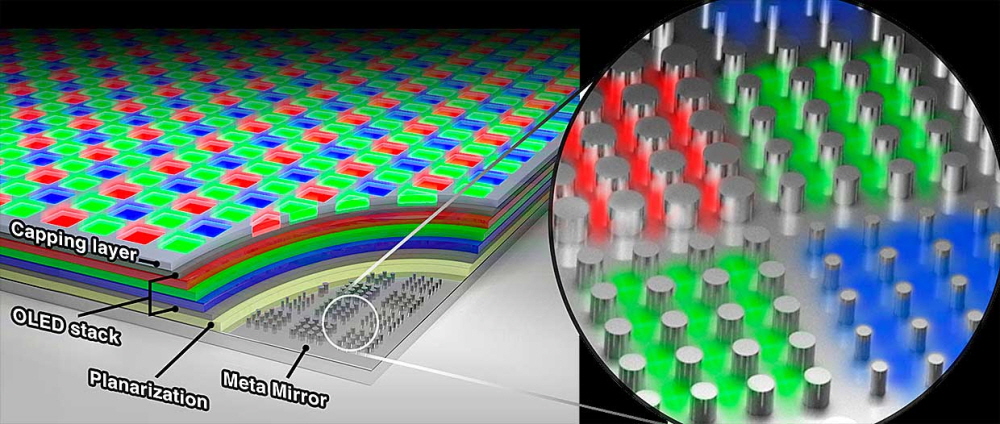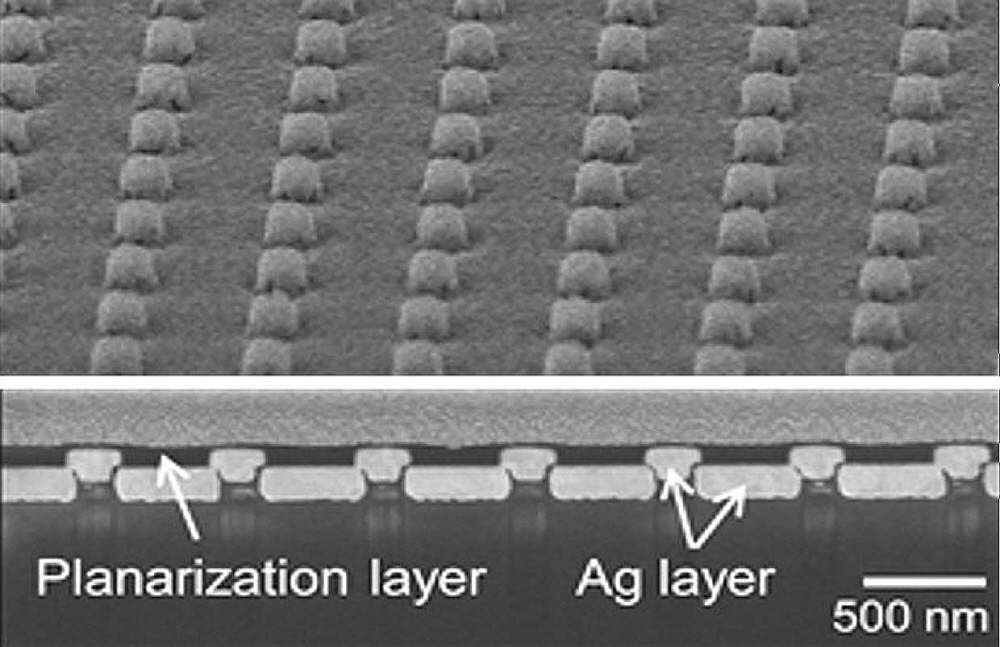
When using a virtual reality headset, some people may sometimes have a mesh or a pixel between the display pixels. Samsung Electronics and Stanford University’s research team are jointly developing OLED technology capable of high density over 10,000 ppi.
Currently, OLED-based products can be divided into two mainly for smartphones and large TVs. The OLED display for smartphones is characterized by high color reproducibility and easy to refine in the form of emitting red, green, and blue three-color OLED. But it’s still around 500ppi.
On the other hand, for large-sized TVs, a white OLED backlight is used to add color using a color filter. While high contrast can be realized, the light utilization efficiency is lowered as the filter passes.
A new OLED technology developed by both sides places a film on which the OLED is placed between two reflective layers. One reflective layer forms a silver thin film and the other forms a meta-surface with numerous nano-sized irregularities, changes the wavelength of light reflected by the arrangement spacing called nano-pillars, and generates colors between RGB.

It is said that this method can realize a display with a pixel density of more than 10,000 ppi, which is much higher than that of a smartphone OLED, and a display that combines the brightness of an OLED for a large screen. The research team revealed that the theoretical scaling limit obtained as a result of the simulation is estimated to be 20,000 ppi. However, when the pixel becomes 1 μm or less due to miniaturization, there is a problem that the pixel brightness is weakened.
Currently, the most ideal device for using this high-pixel density display is a display for a virtual reality headset. With a pixel density of 10,000 ppi, the human eye cannot see anything like a mesh. Of course, if you try to create ultra-high-resolution images tailored to ultra-high-resolution virtual reality displays, it will be difficult for a few years or more, as it requires a significant high-performance computer, but the availability of new OLED technology will solve the virtual reality headset quality problem.
In addition to Samsung Electronics, development of a display with a pixel density of 10,000 ppi or higher is in progress. Companies like JBD (Jade Bird Display) and Canadian VueReal are said to be developing 10,000 to 30,000 ppi displays with micro LED technology. Related information can be found here .

